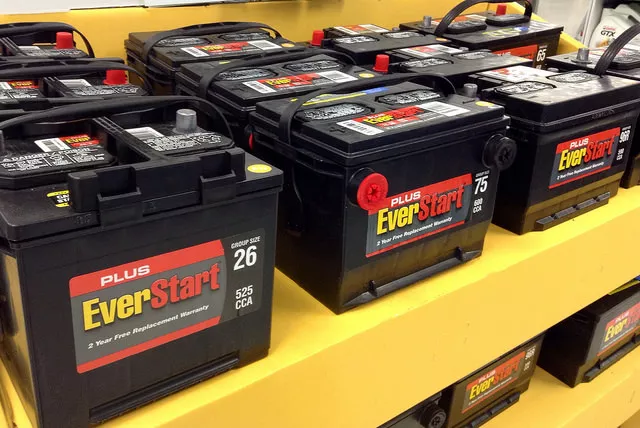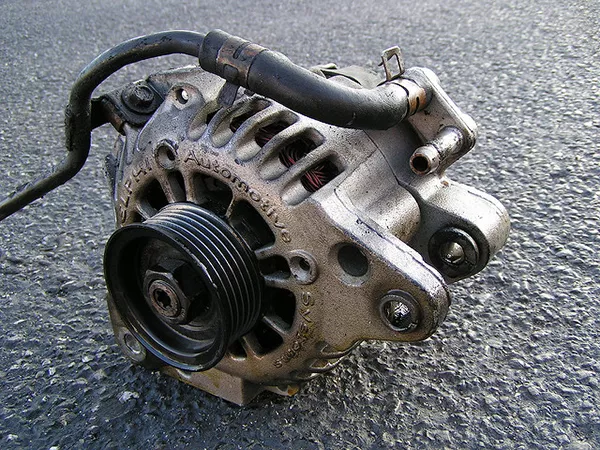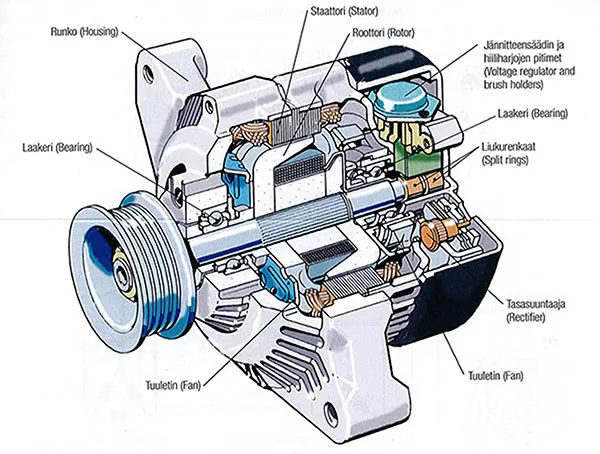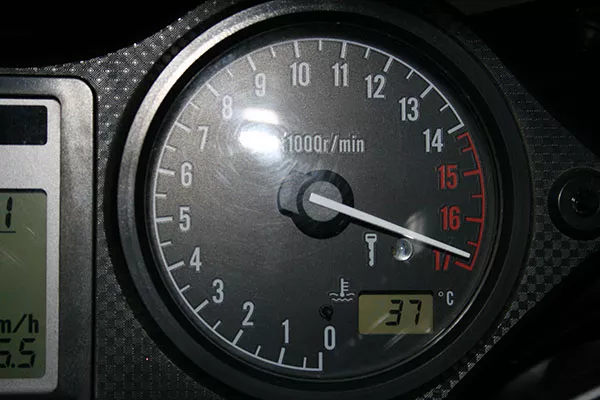Imagine a scenario where your car broke down and won't start. You have a busy day ahead of you but you're a car guy and your vehicle is a priority to you. So you went out and tried to get it fixed and found out you need to replace both your battery and alternator but then you only managed to get you to fix your alternator. Maybe it's because you ran out of money or you ran out of time, probably both.
That’s not optimal but it will have to do because you have other stuff on your hand. Time is gold after all. Your battery still holds enough charge to start your car anyway, if not push starting the car will do as a temporary fix.

New batteries are pricey and are often relegated for purchase at another time. Bad idea.
You might forget about your battery problem at some point which is really bad. But then you’re a very keen but otherwise very busy car person who loves his car and as such is or will be stressed out of your mind because of your vehicle’s electrical systems situation.
>>> You might like to read: 7 factors that affect your car's battery life expectancy
Then by some chance, you remember all those rumors old assumptions and hearsay that your dead or dying battery which is barely holding on will eventually destroy your shiny, new and definitely pricey alternator. You might even lose some sleep and stress over this but fear not. We at Philkotse.com might be able to provide an answer.

It's good to have a lot of neighbors who can help to push your busted car
The question, however, is difficult to answer without getting to know the inner workings of an alternator. So let us start with the basics first.
Let’s say for some reason you can produce a magnetic field like that famous mutant from the comic books. A magnetic field which you can move towards a coil of wires.
If you do so these little tiny things called electrons will start to shake and become excited. Guess what? You just made electricity. Now calm down before you do something dangerous with your superpowers.

For my first trick, I will make your car start with the power of my magnetism!
The amount you can make however depends on how large or small your magnetic field is. The bigger your magnetic field the more electricity you can make. Conversely, you can also create a magnetic field by passing a current through a coil of wire. That’s essentially how an alternator works. Don’t do these at home with non-prescribed tools and instruments if you don’t know what you’re doing though.
Now, as with any kind of part that makes up a vehicle the alternator can be subdivided into several parts, if you’re a mechanic or if you know your way around tools. Many of these parts are replaceable individually so take note if you don’t want to waste money on buying a new entire alternator.

Getting the alternator out is easier said than done
>>> Related: How long do alternators last? When and how to have them replaced?
1. The Rotor and Stator
These two are a bunch of magnets wrapped by copper wires. The stator, the one that doesn’t move is the part that surrounds the rotor. The rotor is a fast-spinning part that is attached with a pulley which in turn is connected with a belt to your crankshaft which we all know spins as the engine run.
This, in turn, spins the rotor. As the rotor spins it creates a magnetic field which allows the stator to create an alternating current to flow to the next part. But car batteries can’t use an alternating current! That’s where the next part comes into play.
2. The Diode Assembly
A diode assembly converts alternating current otherwise known as AC electricity, which is otherwise useless for a car, into direct current, otherwise known as DC. AC flows back and forth and is the kind we use daily with our appliances. Whereas DC flows in one direction just like the batteries you use in a flashlight.
3. The Voltage Regulator
This part keeps the amount of electricity which flows to the car battery in check. It also monitors the alternator for the same reason.

Alternator cutaway with labeled parts
>>> Related: How to test an alternator without a multimeter
So in its entirety, the alternator system is designed to refill the car battery after starting your car’s engine. It also supplies electricity to other parts of the car. When for example you use your car’s lights, the voltage regulator senses the lowered overall total voltage of your car’s electrical system.
It then adjusts the current from the rotor to patch up the loss. Also, keep in mind that if you drive faster the crankshaft spins faster thus making the rotor spin more creating a surge of electricity. The sudden increase in generated power is also regulated by the voltage regulator to keep the system in balance.
Most alternators have a set rating with regards to the electricity it churns out. That’s why you can’t just pick up a random alternator and stick it in your car. Some cars and spin their crankshafts faster or slower and thus may not be compatible with an alternator only rated at 150 amps at 3000 rpm on a gentle cruise for example. It can be done albeit with some modifications needed.

Doing burnouts? Nah just charging my dead battery
With regards to your car’s battery itself. It can be a greedy hungry beast especially if it’s empty, discharged or weak. If that’s the case, it will certainly eat up a lot of current from your system. This causes the voltage regulator to compensate by sending more current from the alternator’s rotor, mostly on its maximum
The crux of it is, if you constantly leave your vehicle to “charge” by letting it idle, a practice is commonly observed with car owners who have a weak battery, the power hungry batter will cause the alternator’s voltage regulator to constantly push out the maximum amount of current.
>>> Also check out: 2 must-know tips to reactive dead batteries on road
During idle, your alternator which is rated at 3000 rpm at regular cruising speed wasn’t exactly designed to pump out the maximum current all the while running on the minimum amount of rpms through idling. This is where the wear and tear start, specifically with the alternator brush, the slip and slip rings which is then further made worse by the lessened capability of your idled vehicle to cool itself off.
If you increase your RPM to the cruising 3000 rpm, however, it will get better a little bit due to more cooling and the current flowing through the rotor will decrease. If this happens though, the wear and tear will instead be suffered instead by your alternator’s diode assembly.
Some say that most alternator wear occurs during the last 10 percent of a batteries’ life. So it is advised that when you get the chance, have someone regularly check your battery and also you yourself can monitor it by following the manufacturer’s specified date to replace.
Good luck and happy wrenching and driving with helpful tips and advice on Philkotse.com!
Recent posts
- A driver's guide in choosing the right battery brand in the Philippines Mar 10, 2022
- 6 steps to safely replace your car battery Jun 21, 2018
- Use your car at least twice a week to protect its critical parts Sep 24, 2021
- Tips for buying replacement car parts Sep 29, 2017











